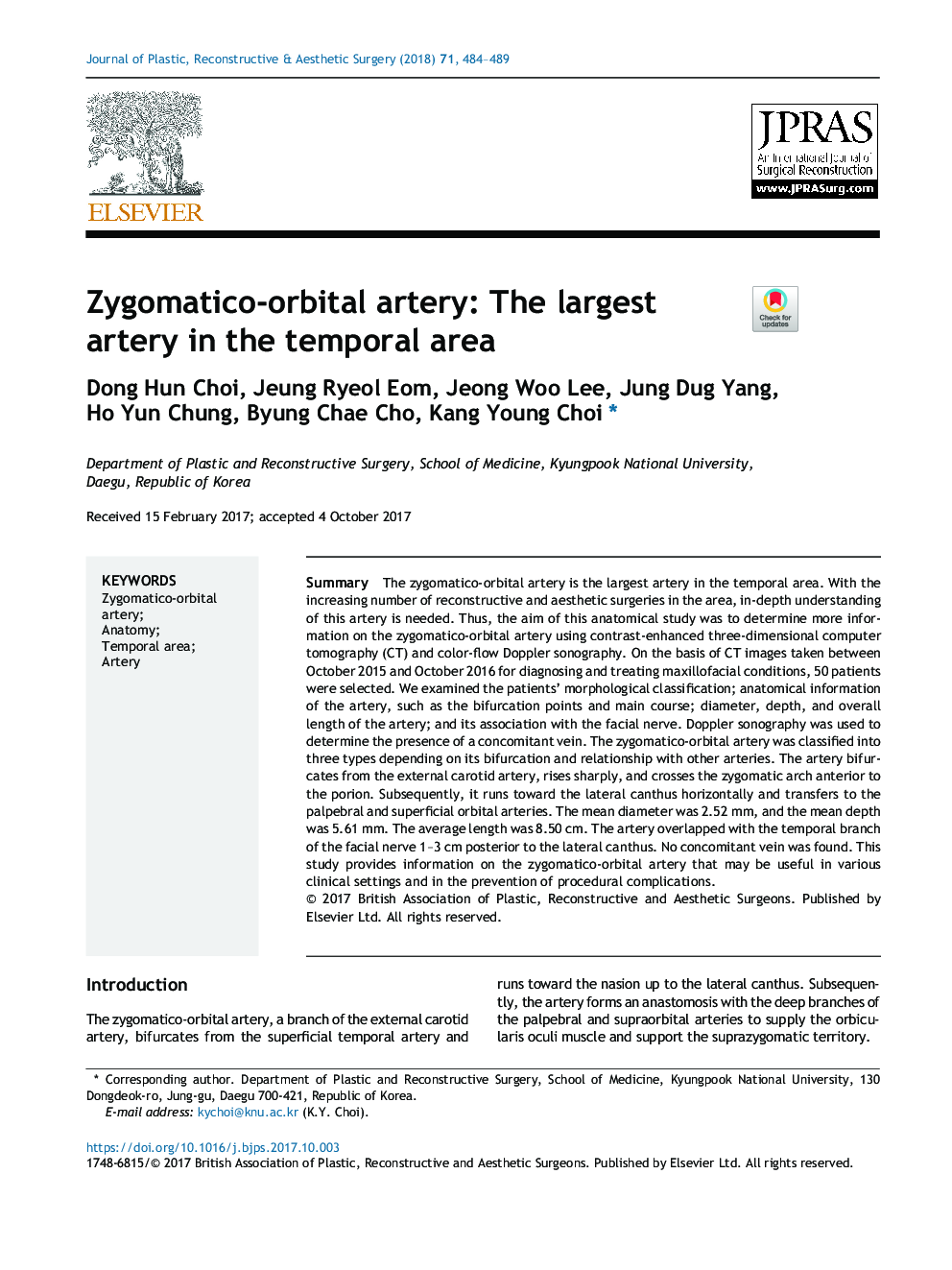| Article ID | Journal | Published Year | Pages | File Type |
|---|---|---|---|---|
| 8806680 | Journal of Plastic, Reconstructive & Aesthetic Surgery | 2018 | 6 Pages |
Abstract
The zygomatico-orbital artery is the largest artery in the temporal area. With the increasing number of reconstructive and aesthetic surgeries in the area, in-depth understanding of this artery is needed. Thus, the aim of this anatomical study was to determine more information on the zygomatico-orbital artery using contrast-enhanced three-dimensional computer tomography (CT) and color-flow Doppler sonography. On the basis of CT images taken between October 2015 and October 2016 for diagnosing and treating maxillofacial conditions, 50 patients were selected. We examined the patients' morphological classification; anatomical information of the artery, such as the bifurcation points and main course; diameter, depth, and overall length of the artery; and its association with the facial nerve. Doppler sonography was used to determine the presence of a concomitant vein. The zygomatico-orbital artery was classified into three types depending on its bifurcation and relationship with other arteries. The artery bifurcates from the external carotid artery, rises sharply, and crosses the zygomatic arch anterior to the porion. Subsequently, it runs toward the lateral canthus horizontally and transfers to the palpebral and superficial orbital arteries. The mean diameter was 2.52âmm, and the mean depth was 5.61âmm. The average length was 8.50âcm. The artery overlapped with the temporal branch of the facial nerve 1-3âcm posterior to the lateral canthus. No concomitant vein was found. This study provides information on the zygomatico-orbital artery that may be useful in various clinical settings and in the prevention of procedural complications.
Keywords
Related Topics
Health Sciences
Medicine and Dentistry
Otorhinolaryngology and Facial Plastic Surgery
Authors
Dong Hun Choi, Jeung Ryeol Eom, Jeong Woo Lee, Jung Dug Yang, Ho Yun Chung, Byung Chae Cho, Kang Young Choi,
